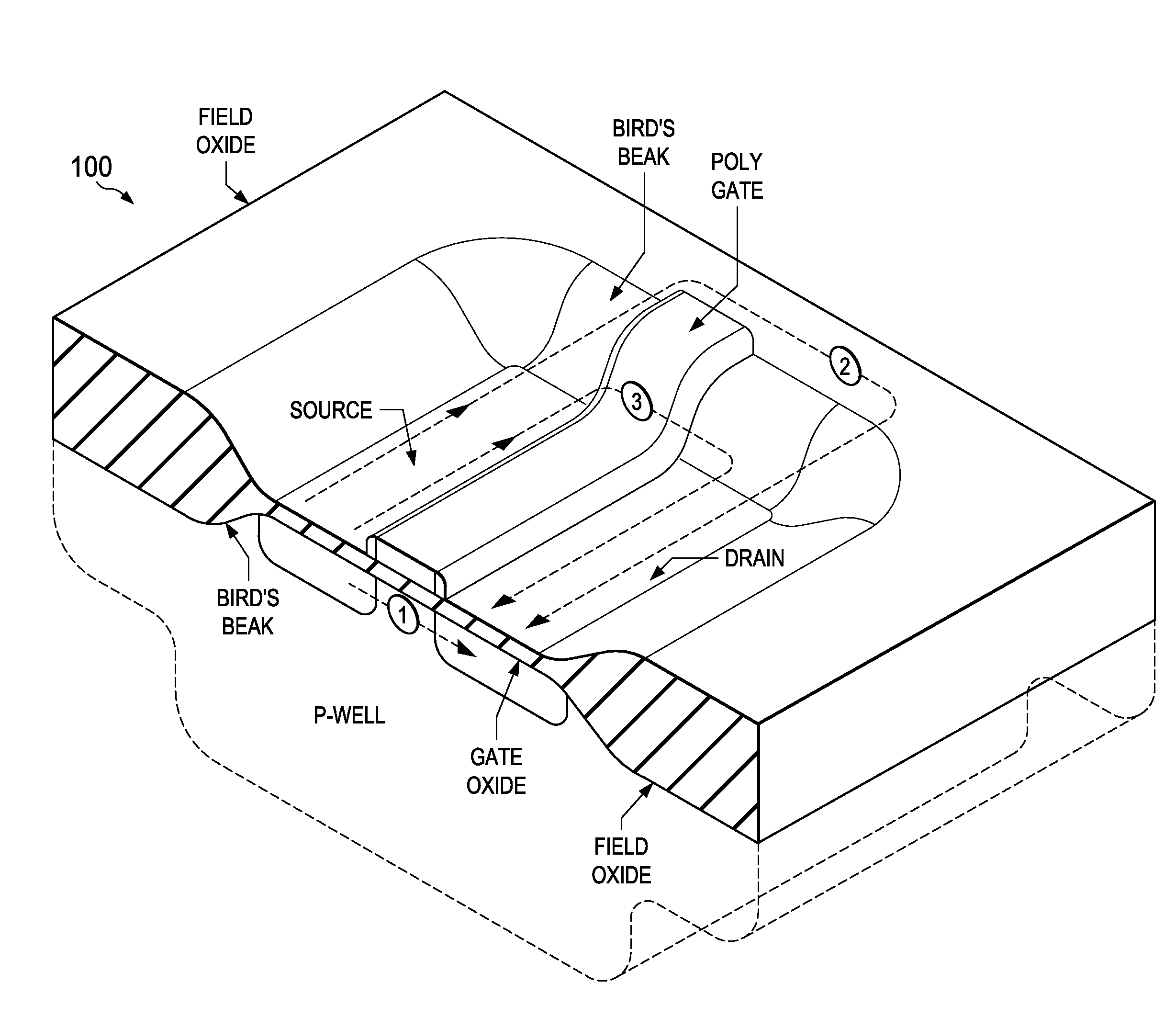Radiation hardened mos devices and methods of fabrication
- Summary
- Abstract
- Description
- Claims
- Application Information
AI Technical Summary
Benefits of technology
Problems solved by technology
Method used
Image
Examples
Embodiment Construction
[0033]Referring to FIG. 1, there is shown a cross-sectioned isometric view of a typical NMOS transistor device 100 which can be part of an integrated circuit having multiple such transistors such as an NMOS device, a CMOS device (the PMOS transistor not being shown), or a BiCMOS device (which would additionally include bipolar junction transistors. In the illustrated device, the NMOS transistor is formed in a “p-well” which is a lightly doped p-type region formed within a silicon substrate. Alternatively, an entire top layer several micrometers thick or more of the silicon substrate can be lightly doped p-type material. The device 100 as illustrated in FIG. 1 is typical of one produced using a local oxidation of silicon (LOCOS) process used for isolating devices. It can be seen that a source and drain region are formed within a so-called “moat region” covered by a thin gate oxide, and surrounded by an isolating field oxide. Typical thicknesses for these oxides are in the range of 75...
PUM
 Login to View More
Login to View More Abstract
Description
Claims
Application Information
 Login to View More
Login to View More - R&D
- Intellectual Property
- Life Sciences
- Materials
- Tech Scout
- Unparalleled Data Quality
- Higher Quality Content
- 60% Fewer Hallucinations
Browse by: Latest US Patents, China's latest patents, Technical Efficacy Thesaurus, Application Domain, Technology Topic, Popular Technical Reports.
© 2025 PatSnap. All rights reserved.Legal|Privacy policy|Modern Slavery Act Transparency Statement|Sitemap|About US| Contact US: help@patsnap.com



